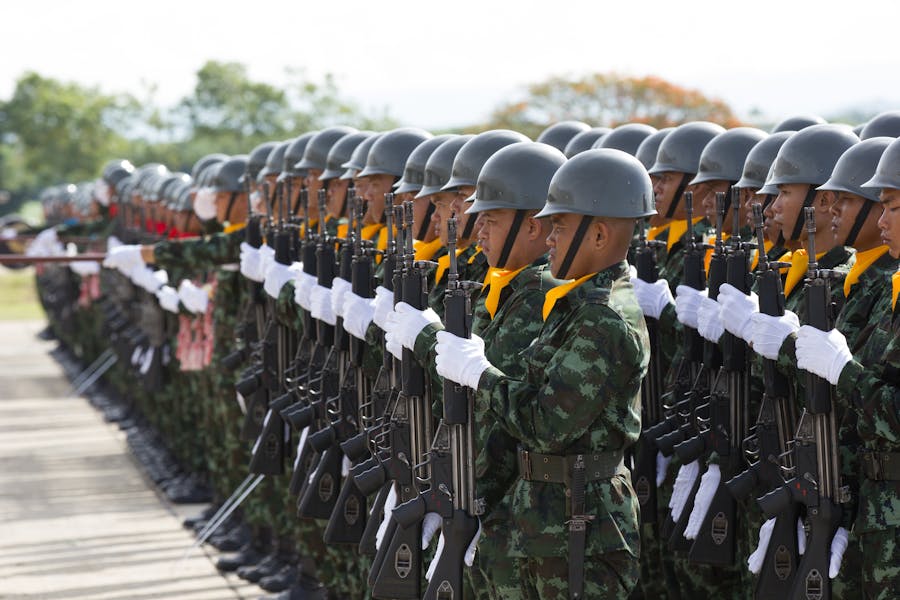
The question “who is in charge of the military during martial law” has fascinated historians, lawyers, and citizens alike. Martial law represents the most drastic shift in governmental authority a nation can experience. It typically occurs during war, rebellion, or internal unrest — moments when civilian control is considered inadequate. But amid such turmoil, who actually leads the military when martial law is declared? Is it still the elected head of state, or does a senior general assume power?
To answer that, one must look at constitutional law, military tradition, and historical precedent. In most systems, the head of state or president remains the commander-in-chief, holding ultimate legal authority. However, in practical terms, military leadership during martial law can shift depending on the scale of the emergency. The defence minister or a specially appointed martial law commander typically assumes operational control, managing field decisions and enforcing directives issued by the civilian government.
In the United States, for instance, the president formally remains in control. Yet, during crises like the Civil War or in post-9/11 contingency planning, regional commanders gained temporary operational command to restore order. This balance between legal authority and real-time control defines the essence of martial law. As history and current governance show, understanding the Time in America and how it shaped emergency command structures reveals much about democratic resilience under duress.
This comprehensive guide explores constitutional roles, military hierarchies, and the delicate interplay between law and force during martial law.
Who is in charge of the military during martial law?
Formally, the head of state (commander-in-chief) remains in charge. In practice, a senior military commander or martial law administrator often exercises direct control under the leader’s authority.
Authority and Leadership Structure During Martial Law
When martial law is declared, power shifts rapidly from civilian hands to military control. Yet, who is in charge of the military during martial law depends largely on each nation’s constitution and historical precedents. Constitutions usually assign the head of state — president, monarch, or prime minister — as the formal commander-in-chief. However, the execution of martial law often requires appointing a military commander to manage field operations.
During the American Civil War, President Abraham Lincoln declared martial law in parts of the country. While he retained ultimate authority, generals like Ulysses S. Grant oversaw military districts. This illustrates the balance between civil supremacy and military practicality. Similarly, in the Philippines (1972), Ferdinand Marcos declared martial law and effectively merged his civilian and military powers, ruling by decree.
The decision regarding military leadership during martial law is not merely bureaucratic — it shapes how individual rights are limited, how long emergency powers endure, and how a nation transitions back to normal governance. While the judiciary may have the authority to review such decisions, in reality, courts seldom intervene during active military rule, allowing the executive and armed forces to exercise broad discretion.
Globally, democratic countries attempt to preserve civilian oversight even under martial law. In autocratic systems, generals often become political rulers. The distinction lies in how clearly laws define the temporary nature of martial authority and the mechanisms for its end. When those mechanisms fail, martial law can become permanent, turning command structures into tools of dictatorship.
Command Structure and Leadership Under Martial Law
Who commands the armed forces under martial law reveals how nations balance security with constitutional order. It highlights the delicate transition of power from civilian authority to military control during times of crisis.
Constitutional Foundations and the Commander-in-Chief
Under most constitutions, the president or monarch remains the legal head of the armed forces. Even during martial law, executive command does not vanish. The top civilian leader issues orders and decrees that define how military power should be used.
Emergency Laws Defining Military Control
Every country’s martial law derives from constitutional or statutory provisions. These outline who declares it, how long it can last, and who administers it. For instance, U.S. law and Supreme Court rulings affirm that the president may use the military to enforce laws when civilian authority collapses.
Appointment of Martial Law Commanders
In reality, the person in charge of the military during martial law is often a senior general or defence minister delegated to enforce martial law orders. This person manages curfews, checkpoints, and detentions, reporting back to the head of state.
Balancing Civilian Oversight and Security
Democratic systems try to maintain oversight through legislatures and courts, even under martial law. Accountability is essential to prevent human-rights violations and power abuse.
Restoring Civilian Rule
Once stability returns, the military must transfer control back to elected leaders. This ensures the rule of law resumes and civilian institutions reassert authority.
Leadership and Authority Structure Under Martial Law
During martial law, understanding the chain of command is crucial to grasp how authority shifts between civilian leadership and the military. This transition defines how nations maintain order while striving to preserve constitutional control.
- Legal Framework: The president or head of state remains the official commander-in-chief.
- Operational Command: A martial law administrator or general exercises direct authority in affected areas.
- Judicial Oversight: Courts may review the legality of martial law but rarely intervene during crises.
- Public Order Priority: The military gains authority to maintain peace and security.
- Historical Patterns: Nations like the U.S., South Korea, and Egypt demonstrate different power balances.
- Civil Liberties: Rights are often curtailed but not entirely suspended.
Civilian and Military Power Dynamics During Martial Law
Martial law reorganises how military and civil powers interact. In this system, the civilian leader — usually a president — remains at the top of the hierarchy, but tactical control moves to military officials. When curfews, detentions, or national emergencies require swift response, local commanders act with delegated authority.
However, the question who is in charge of the military during martial law must be seen through two lenses: law and practice. Legally, executive power endures. Practically, generals, defence chiefs, and martial law administrators shape public life. They control communication, transportation, and even judicial processes in extreme cases.
This concentration of authority carries risks. Without oversight, martial rule can lead to abuse. For this reason, most constitutions and international charters — like the UN Covenant on Civil and Political Rights — stress proportional use of emergency powers. Martial law should be temporary, transparent, and accountable.
When order is restored, the armed forces must withdraw to their barracks, allowing civilian governance to resume. This transition determines whether martial law ultimately protected democratic principles or weakened them. Studying the dynamics of military authority during such periods helps societies strengthen accountability, uphold constitutional balance, and prevent the repetition of past abuses.
Importance of Understanding Military Leadership During Martial Law
Knowing the leadership structure during martial law is essential for safeguarding democracy and preventing abuse of power. It helps citizens understand who holds authority and how legal accountability should function in times of crisis.
Protecting Democratic Values
Understanding the chain of command ensures citizens recognise the limits of military power and can demand accountability.
Preventing Abuse
When it’s clear who is in charge of the military during martial law, it’s easier to identify and prevent potential overreach or human-rights violations.
Legal Certainty in Emergencies
A clear structure maintains order while avoiding chaos in crisis situations. Legal definitions prevent confusion between defense and dictatorship.
Upholding International Standards
Even under martial law, governments must respect humanitarian and human-rights laws, ensuring proportional use of force.
Public Awareness and Education
Teaching citizens about martial law fosters resilience, awareness, and informed participation during national emergencies.
Bottom Line
In essence, leadership during martial law reflects a blend of constitutional authority and practical enforcement. The head of state — typically the president or monarch — remains the official commander-in-chief, issuing directives that define how military powers are exercised. However, day-to-day control is entrusted to top-ranking generals or defence officials who implement martial law policies and maintain security across affected regions.
For democracies, this balance between civilian oversight and military command is crucial. It ensures that emergency powers serve protection rather than oppression. When clearly defined and lawfully executed, martial law safeguards order without undermining freedom. But when abused, it risks eroding trust, justice, and the very democratic values it was meant to defend.
FAQ’s
Does martial law override civilian law?
It can temporarily suspend certain civil rights and grant expanded powers to the military, but in most democratic systems, it still operates under constitutional oversight to prevent unchecked authority.
Who commands troops during martial law?
A senior military commander, general, or defence chief typically oversees enforcement operations, acting under the direction and authorisation of the nation’s head of state or government.
How long can martial law last?
The duration varies by country, depending on constitutional provisions and legislative approval. In many systems, extensions require parliamentary consent to ensure accountability and prevent abuse.
Can courts challenge martial law?
Yes, judicial bodies may review the legality and proportionality of martial law declarations. However, during active enforcement, courts often defer to executive authority until stability is restored.
What happens when martial law ends?
Once order is reestablished, civilian institutions retake control, the military withdraws from governance, and normal constitutional processes and civil liberties are fully reinstated.
